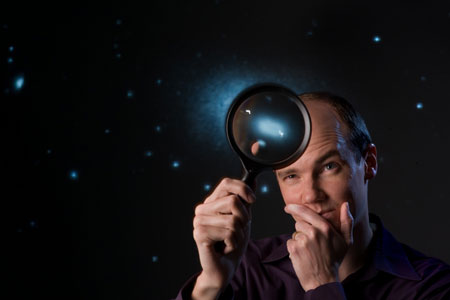| Jun 10, 2013 |
Scientists size up universe's most lightweight dwarf galaxy
|
|
(Nanowerk News) The least massive galaxy in the known universe has been measured by UC Irvine scientists, clocking in at just 1,000 or so stars with a bit of dark matter holding them together.
|
|
The findings, made with the world’s most powerful telescopes at the W. M. Keck Observatory and published today in The Astrophysical Journal, offer tantalizing clues about how iron, carbon and other elements key to human life originally formed. But the size and weight of Segue 2, as the star body is called, are its most extraordinary aspects.
|
 |
| UC Irvine physics & astronomy postdoctoral scholar Evan Kirby is lead author of a paper documenting the least dense galaxy in the known universe, published today in The Astrophysical Journal.
|
|
“Finding a galaxy as tiny as Segue 2 is like discovering an elephant smaller than a mouse,” said UC Irvine cosmologist James Bullock, co-author of the paper. Astronomers have been searching for years for this type of dwarf galaxy, long predicted to be swarming around the Milky Way. Their inability to find any, he said, “has been a major puzzle, suggesting that perhaps our theoretical understanding of structure formation in the universe was flawed in a serious way.”
|
|
Segue 2’s presence as a satellite of our home galaxy could be “a tip-of-the-iceberg observation, with perhaps thousands more very low-mass systems orbiting just beyond our ability to detect them,” he added.
|
|
“It’s definitely a galaxy, not a star cluster,” said postdoctoral scholar and lead author Evan Kirby. He explained that the stars are held together by a globule called a dark matter halo. Without this acting as galactic glue, the star body wouldn’t qualify as a galaxy.
|
|
Segue 2, discovered in 2009 as part of the massive Sloan Digital Sky Survey, is one of the faintest known galaxies, with light output just 900 times that of the sun. That’s miniscule compared to the Milky Way, which shines 20 billion times brighter. But despite its tiny size, researchers using different tools originally thought Segue 2 was far denser.
|
|
““The Keck telescopes are the only ones in the world powerful enough to have made this observation,” Kirby said of the huge apparatus housed on the summit of Mauna Kea in Hawaii. He determined the upper weight range of 25 of the major stars in the galaxy and found that it weighs at least 10 times less than previously estimated.
|

